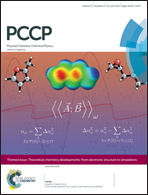Dielectric, thermal and mechanical properties of zirconium silicate reinforced high density polyethylene composites for antenna applications
Abstract
A low cost and low dielectric loss zirconium silicate (ZrSiO4) reinforced HDPE (high-density polyethylene) composite has been developed for antenna applications. The 0–3 type composite is prepared by dispersing ZrSiO4 fillers for various volume fractions (0.1 to 0.5) in the HDPE matrix by the melt mixing process. The composite shows good microwave dielectric properties with a relative permittivity of 5.6 and a dielectric loss of 0.003 at 5 GHz at the maximum filler loading of 0.5 volume fraction. The composite exhibits low water absorption, excellent thermal and mechanical properties. It shows a water absorption of 0.03 wt%, a coefficient of thermal expansion of 70 ppm per °C and a room temperature thermal conductivity of 2.4 W mK−1. The composite shows a tensile strength of 22 MPa and a microhardness of 13.9 kg mm−2 for the filler loading of 0.5 volume fraction. The HDPE–ZrSiO4 composites show good dielectric, thermal and mechanical properties suitable for microwave soft substrate applications. A microstrip patch antenna is designed and fabricated using the HDPE–0.5 volume fraction ZrSiO4 substrate and the antenna parameters are investigated.


 Please wait while we load your content...
Please wait while we load your content...